I fell down an internet rabbit hole recently. It started with a tweet from someone I follow on my personal account, a comedian who used to appear in a show of which I am a big fan; he had discovered that his aunts had received typed lyrics from Cole Porter in 1940! That’s a pretty amazing thing to have in your family history right there but my eyes were instantly drawn to the last lines and the mentioning of a Kungsholm cruise.
I’ve kept it pretty secret but I think I can reveal something now: I’m quite fond of cruising. Fond enough that I thought I’d take a nose to see what I could find about this ship, Kungsholm. Obviously, the first place to hit was Wikipedia and it was on the ship’s information page that I found this public domain cross-sectional image of the vessel and the thing that persuaded me to find out as much else as I could. I love this diagram. They need this sort of diagram for all ships. This would make a cracking poster. It would make a fabulous jigsaw. It would make an awesome room-based or side-scrolling computer game.
MS Kungsholm launched in 1928 and was owned and operated by Swedish American Line until America entered the war in late 1941 and acquired the ship for troop transportation. Kungsholm was designed for both liner service to America and cruising in northern Europe off-season; in the former role she could carry 1344 passengers while her cruising configuration dropped that down to just 600. Prior to the outbreak of World War II the Kungsholm had serviced the transatlantic route as a liner (Gothenburg to New York) but became solely a cruise ship targeting the Caribbean when war conditions made that route too risky a one even with the neutral colours and flag of Sweden flying.
The year before Kungsholm’s maiden voyage the SS Île de France had launched, it famously being the first ocean liner to be decorated in the art deco style. Kungsholm’s interior design followed that beautiful trend and the discovery of a scanned brochure of the ship on a Swedish archival site as well as photographs on the Internet Archive gives a great idea of what cruising on Kungsholm must have been like. It’s also interesting to see the class distinctions onboard as Kungsholm cruised with first, second, and third class passengers.
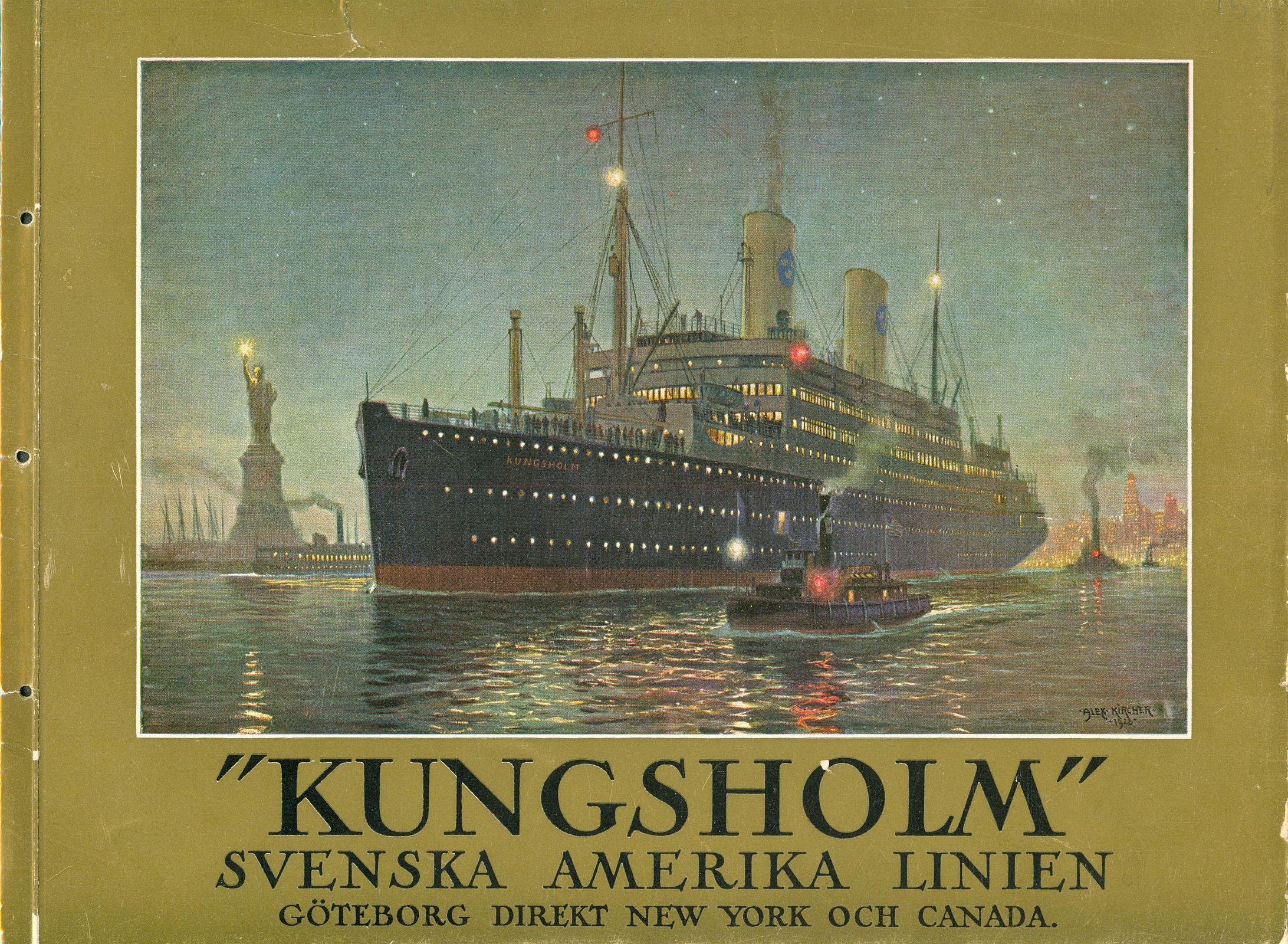
First Class
When you consider the sizes of ships today compared to liners and cruisers of the time of vessels like Kungsholm it’s impressive to see just how much space is dedicated to the library.
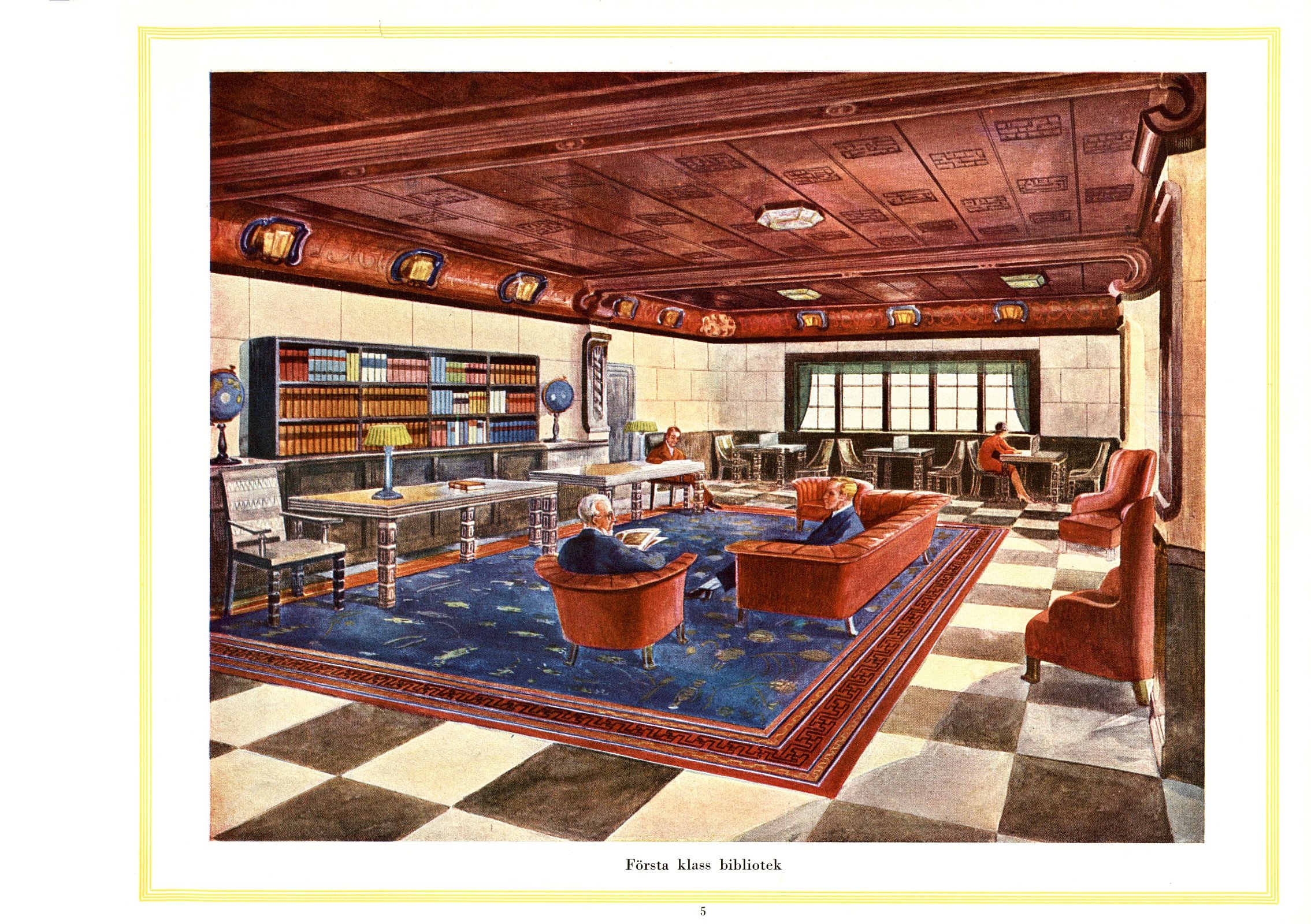
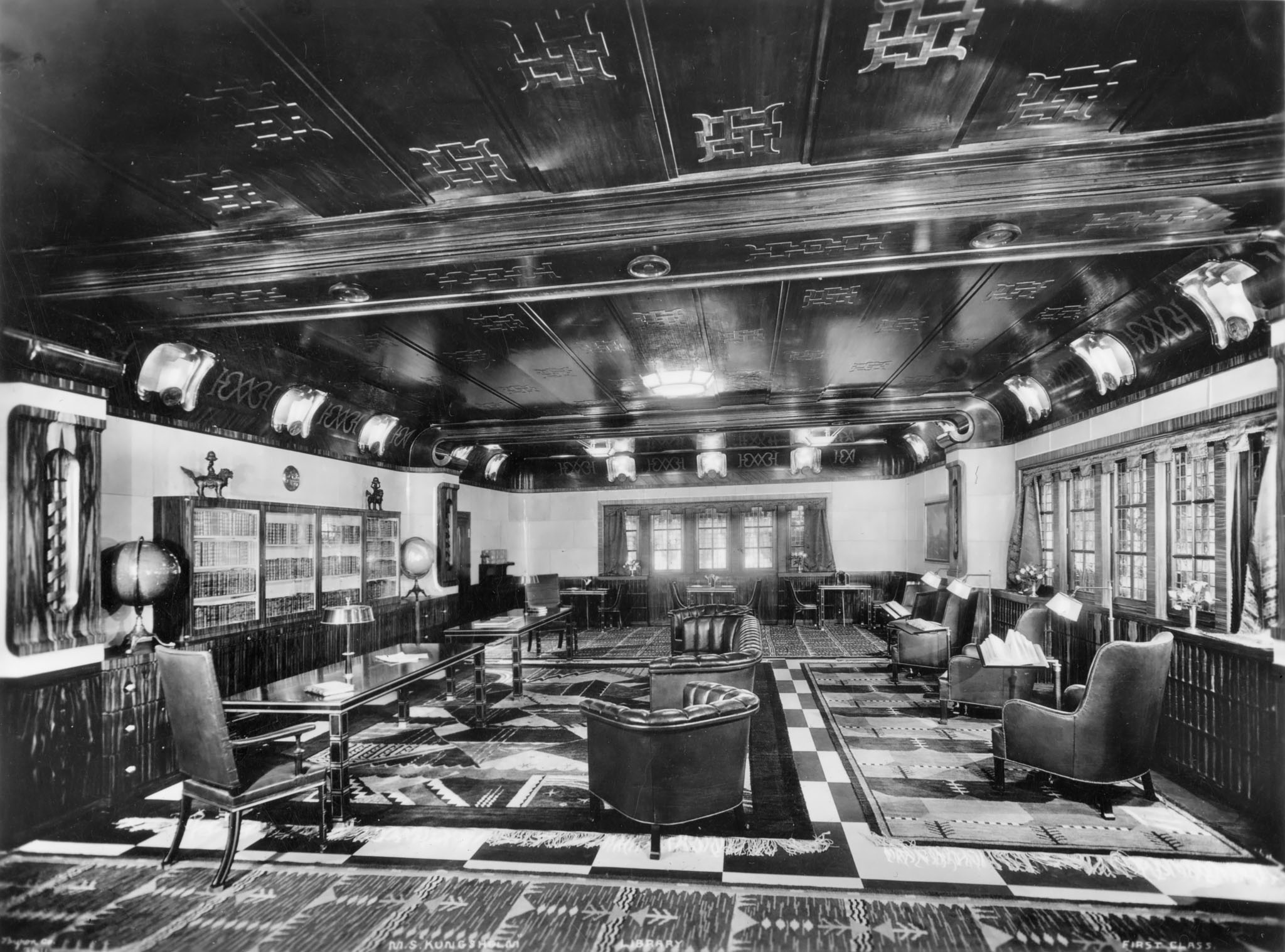
Each class appeared to have several lounges serving the needs of passengers who wanted some quiet time, some musical accompaniment, or the chance to cut short their lives and stink up their clothing with nicotine. The art deco styling of the upper classes was supplemented by orientalism influences both in colouring and style while those of the lowest class swapped the art deco out for more rural scenes reflecting the Swedish side of Swedish American Line.
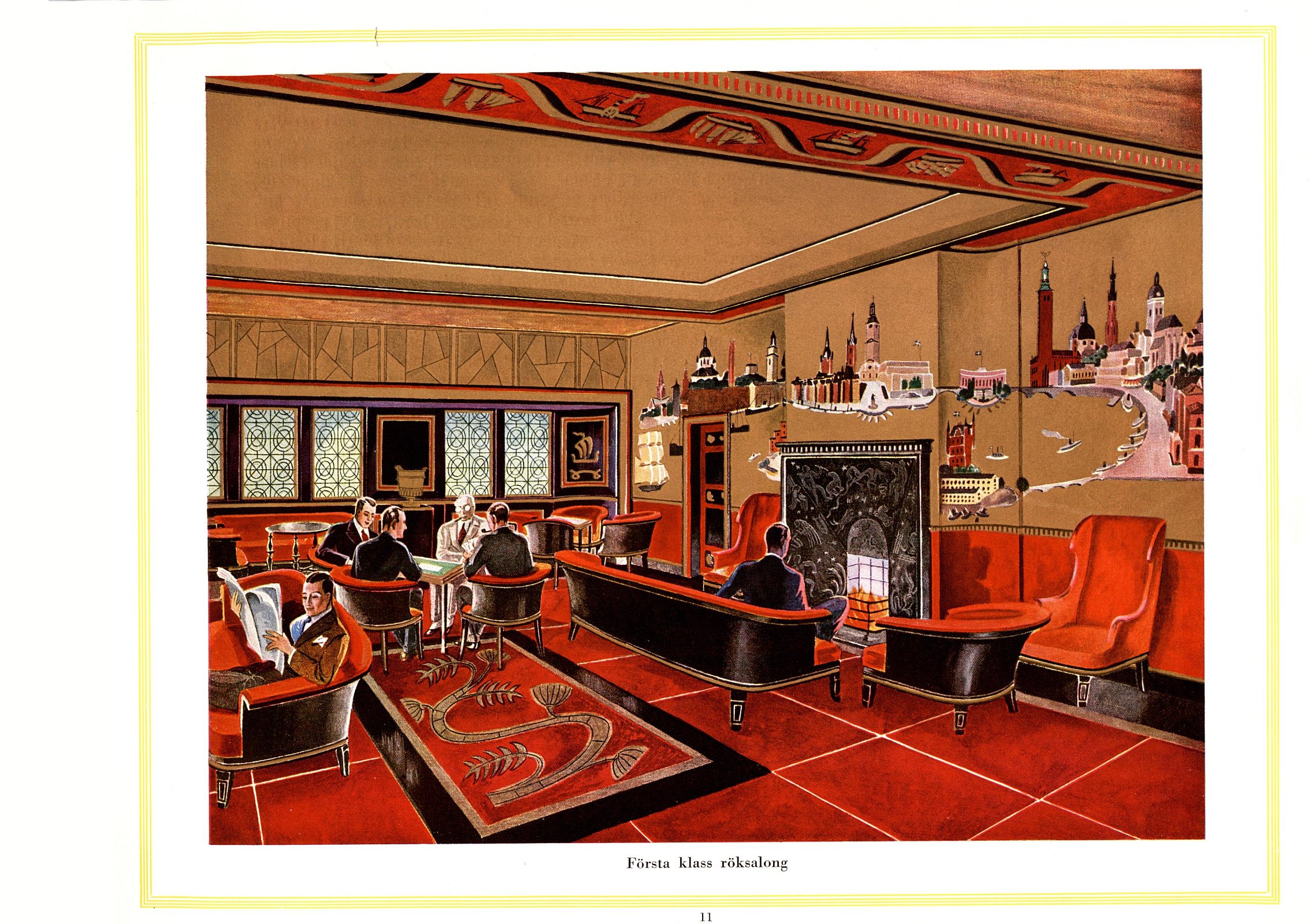
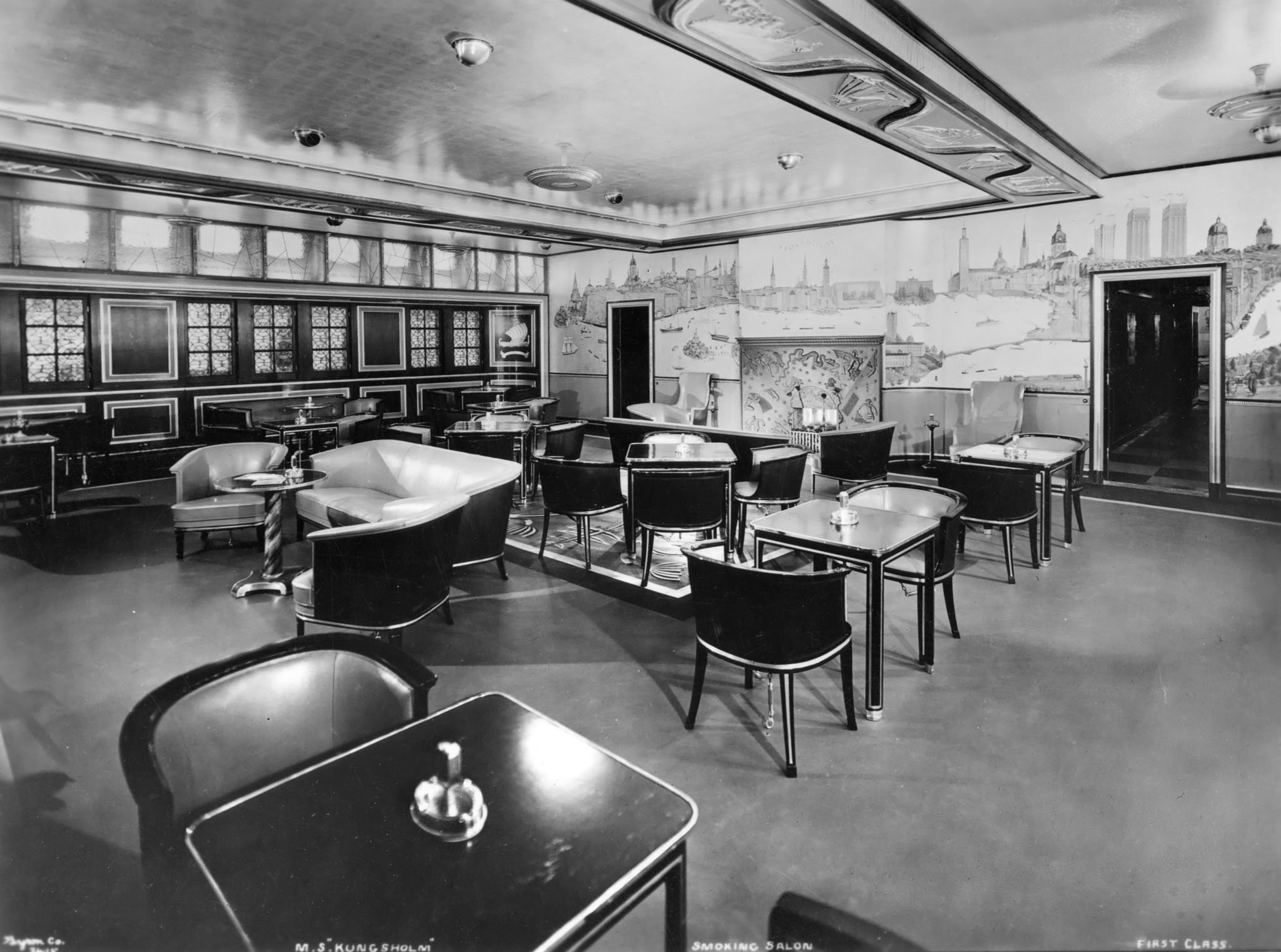
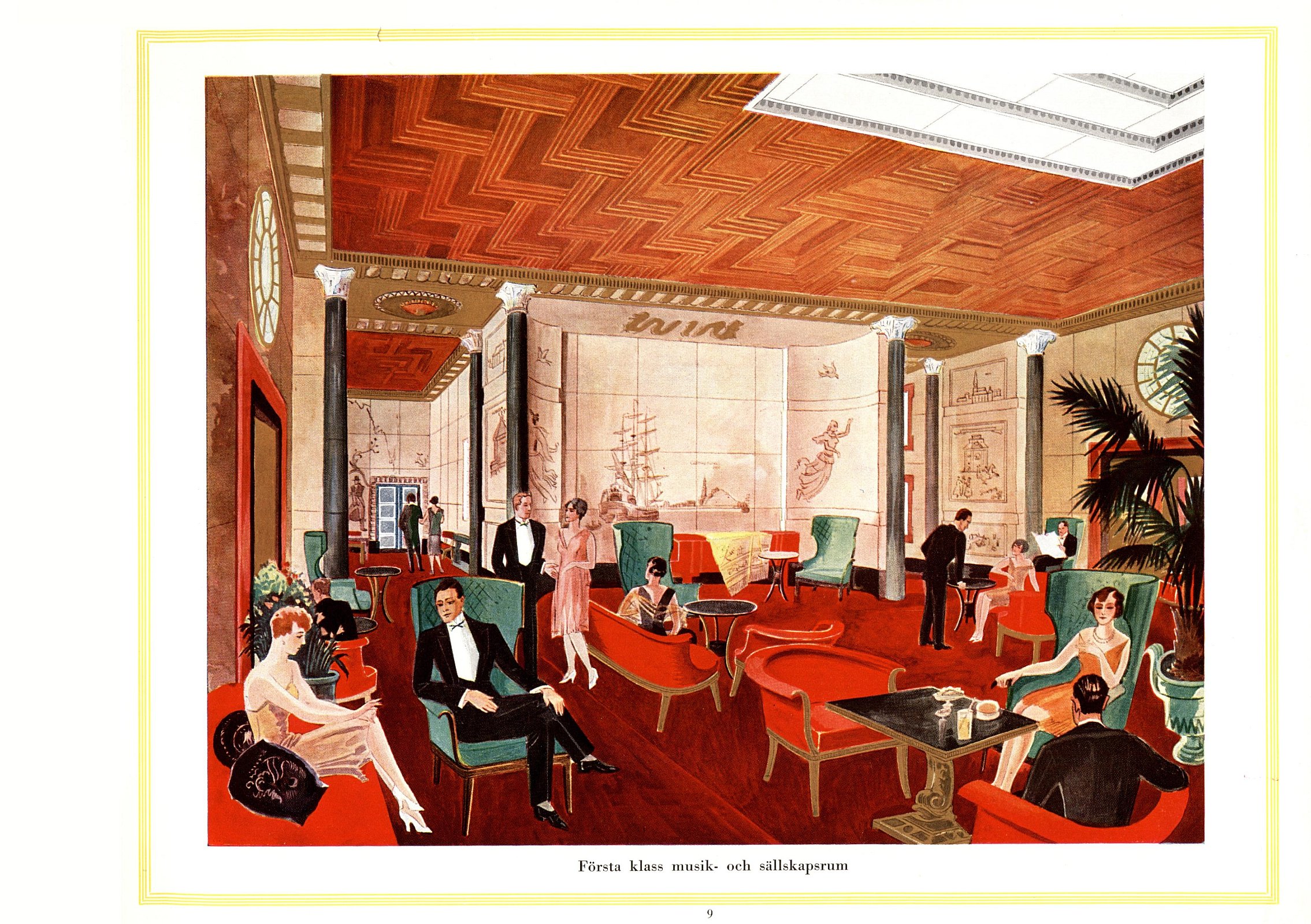
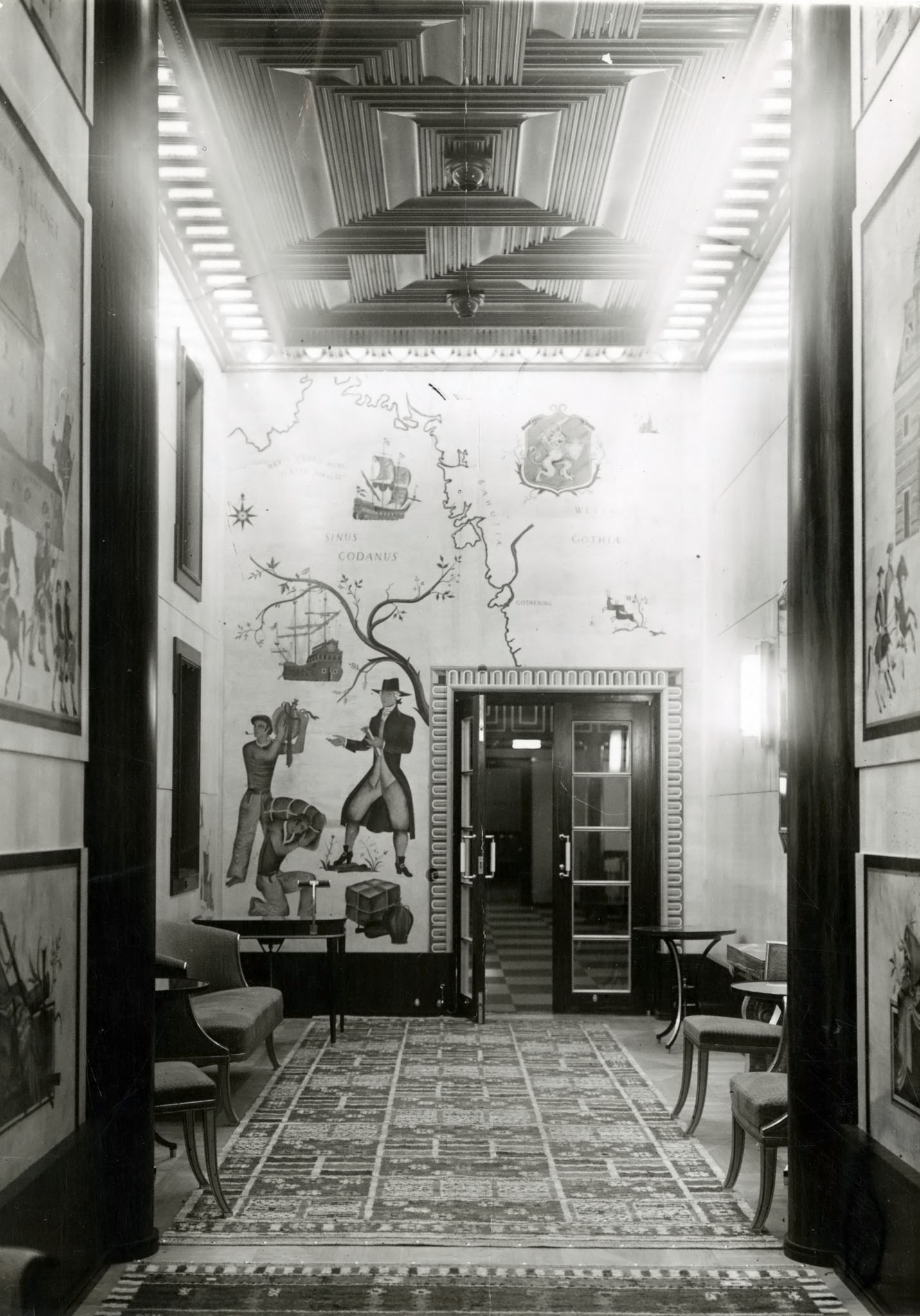
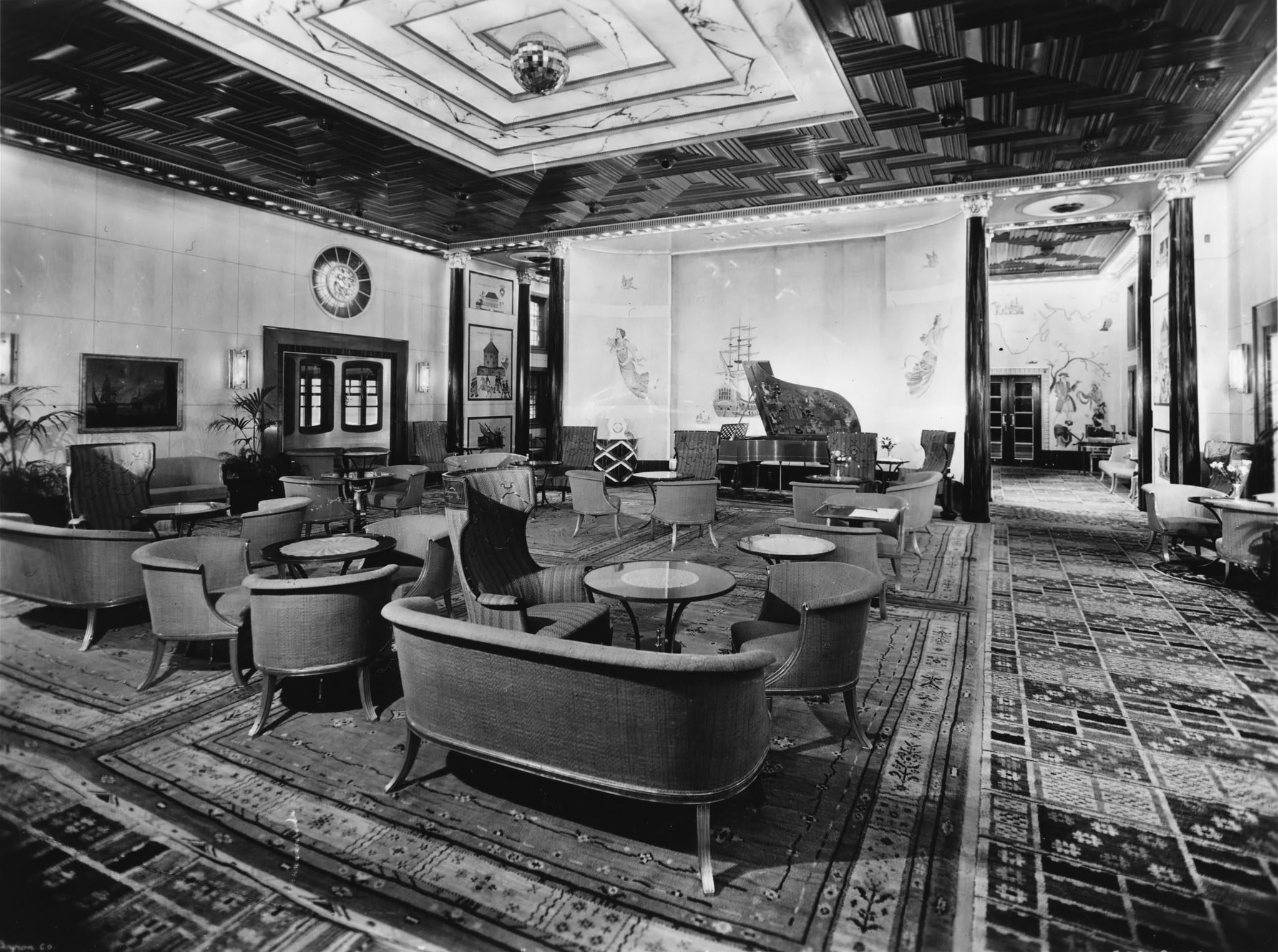
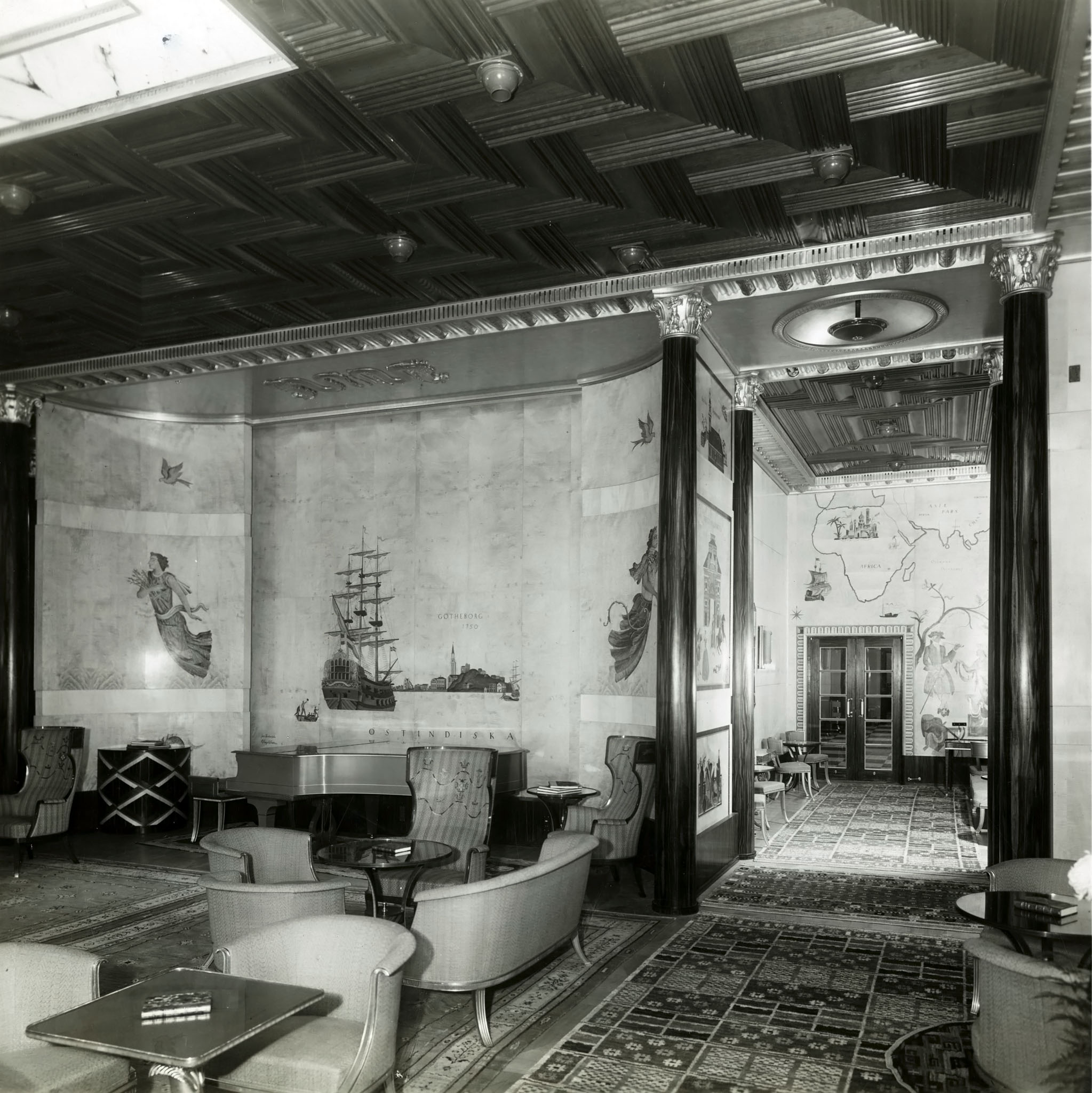
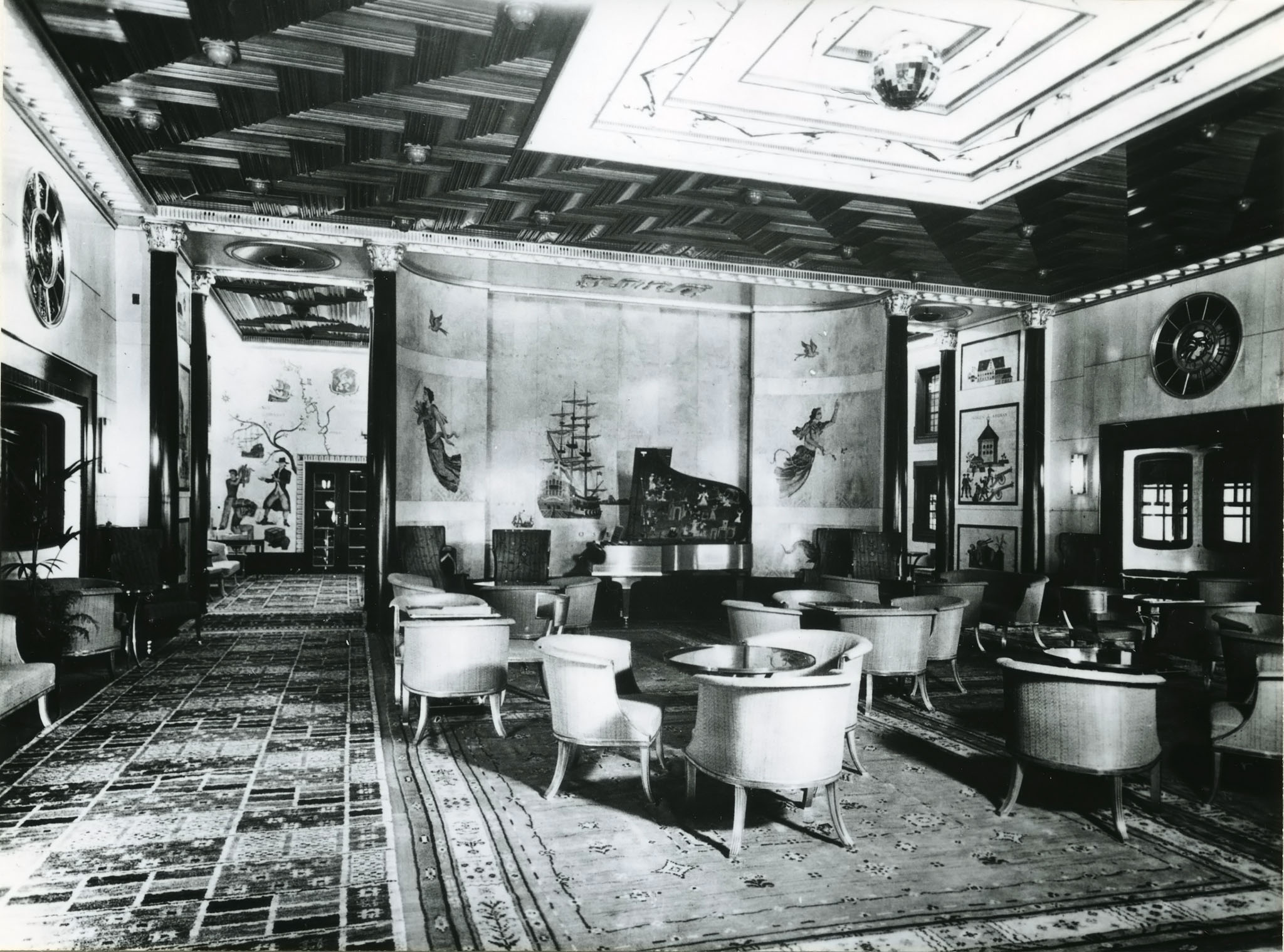
I can’t imagine that the all-day buffet of today’s cruise ships was in operation back in the 1930s but dining was still an important experience that was well-catered for in each class. The lobby approaching the dining room for first class passengers was particularly nice, the style elements of art deco screaming through the tiled floor and sweeping balcony design.
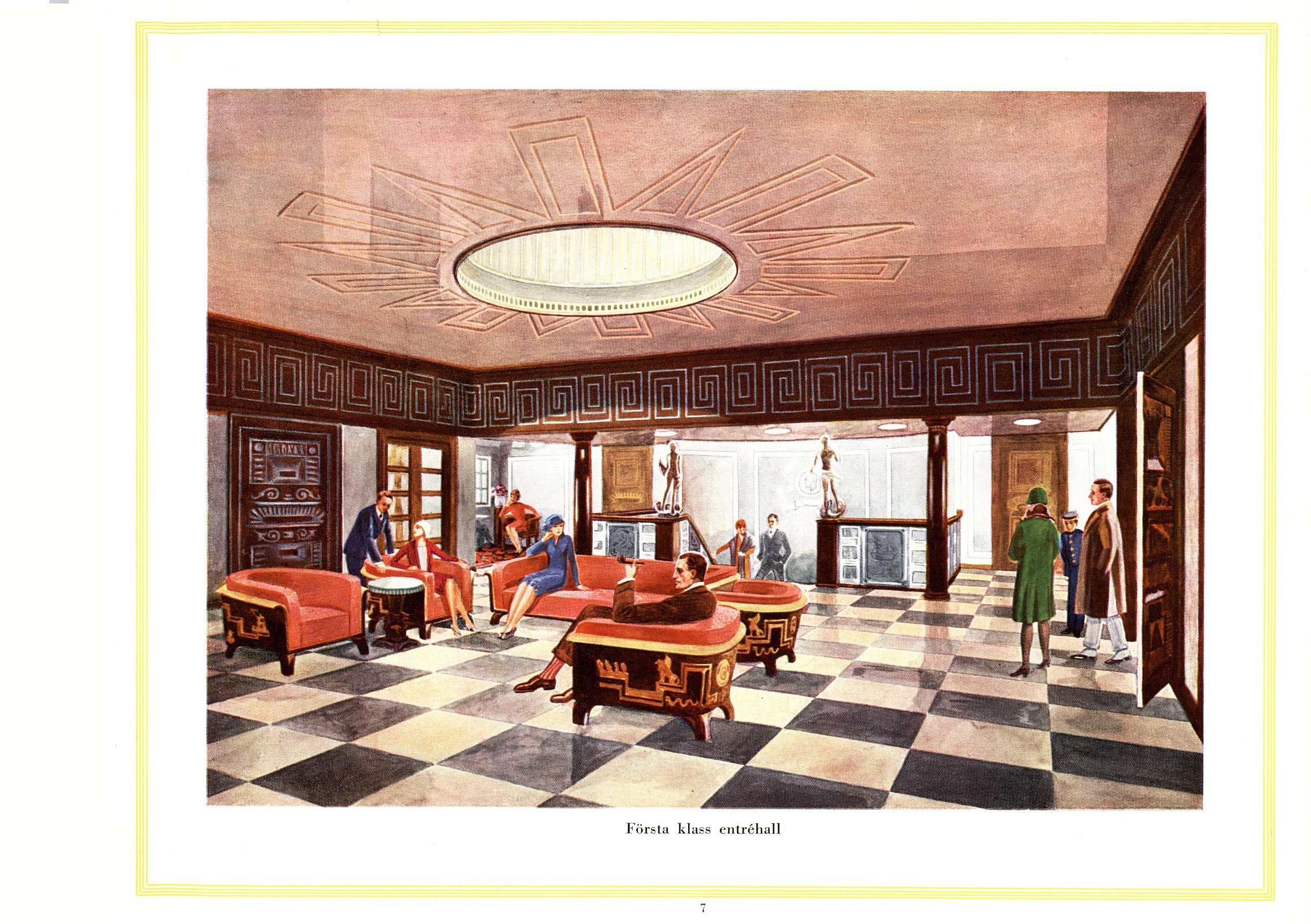
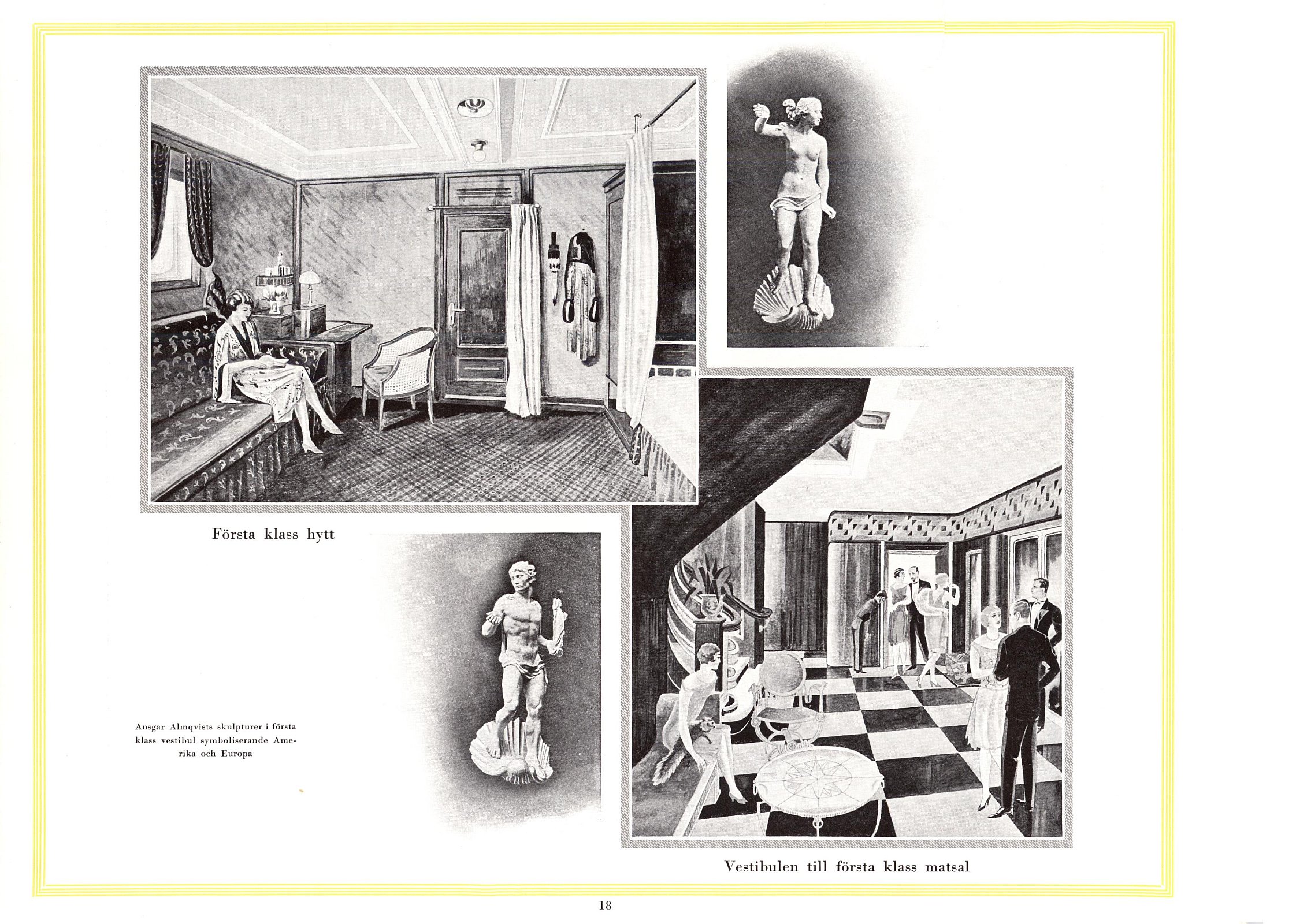
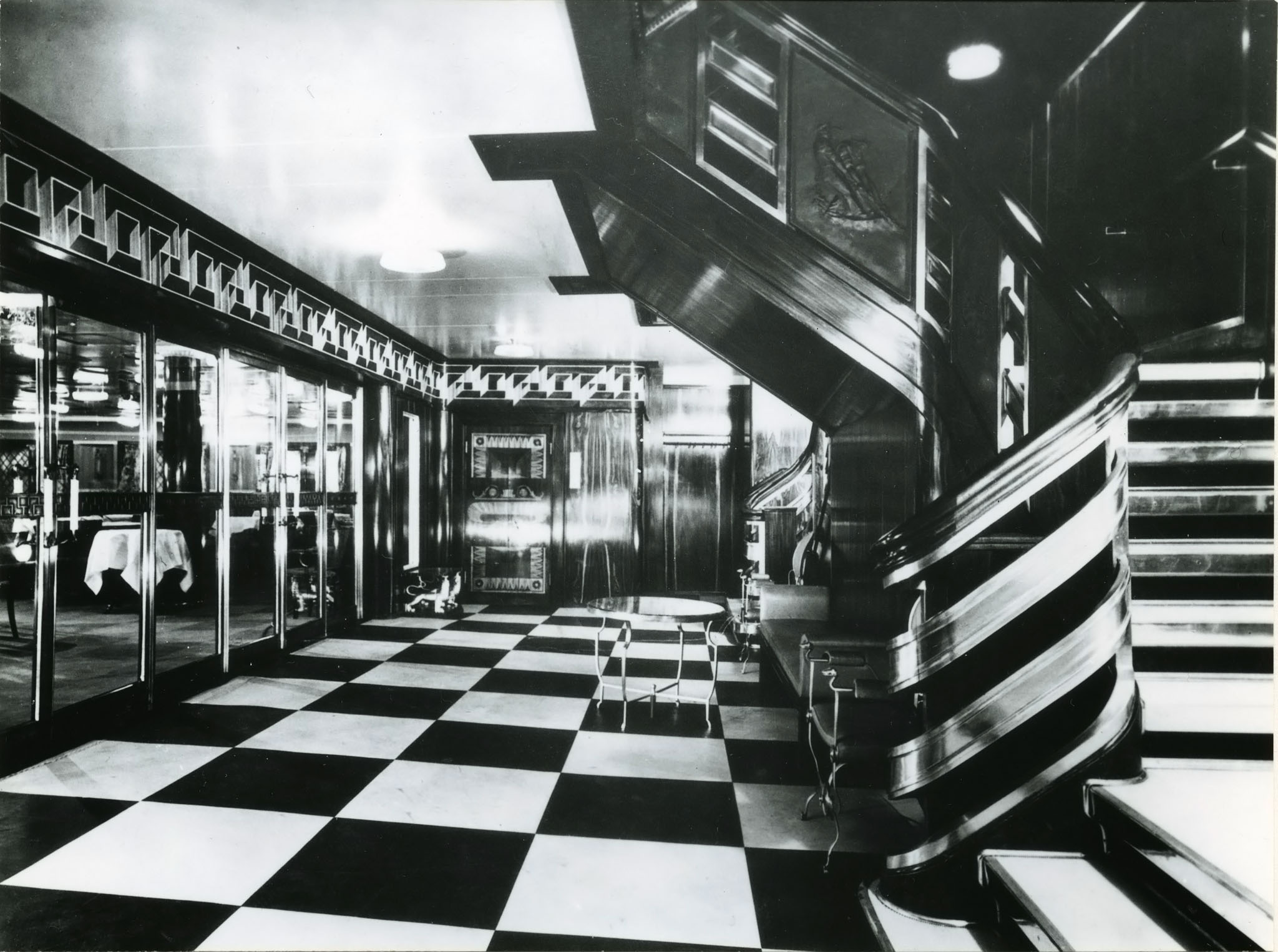

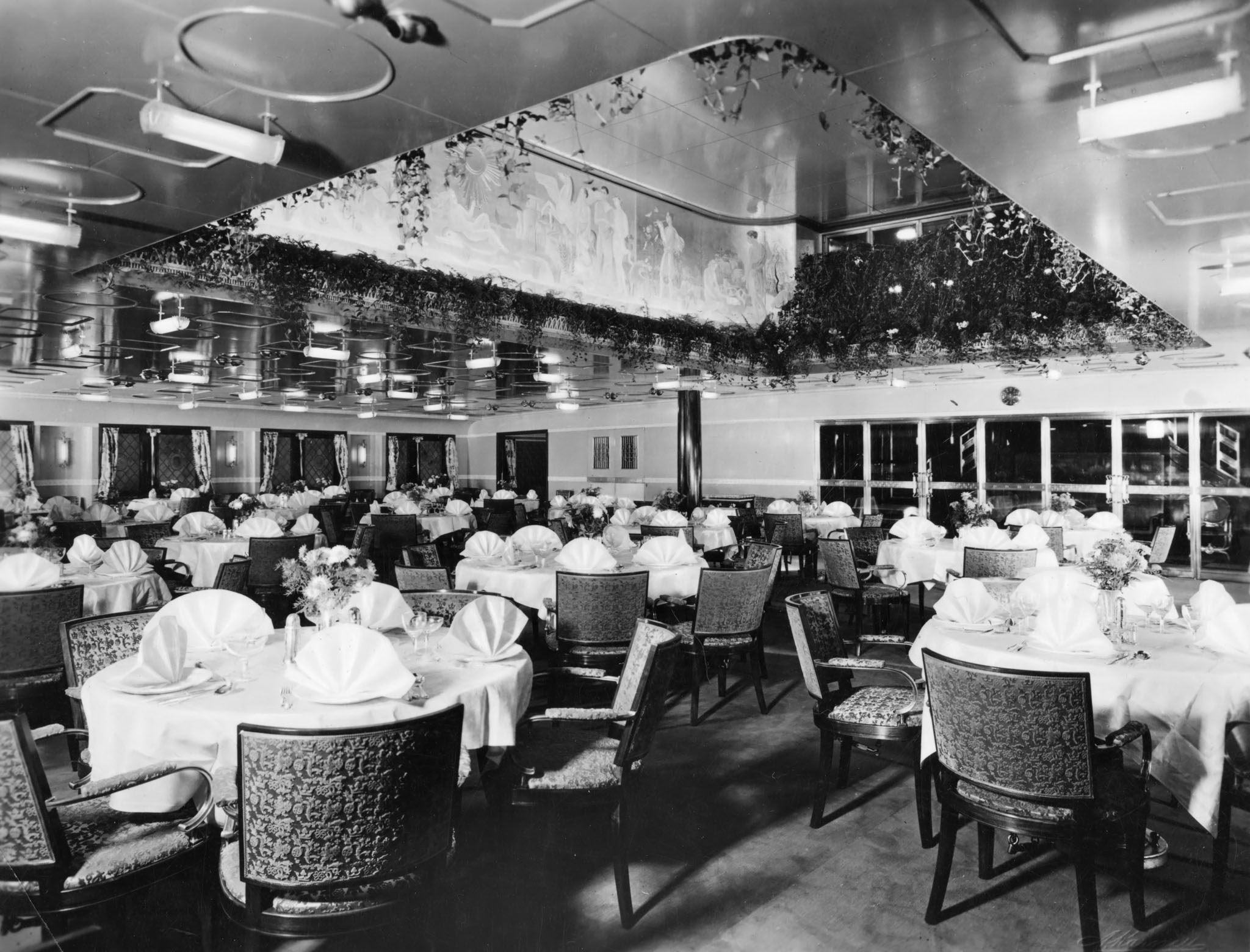
The first class cabins had the luxury of ensuite bathrooms according to the photo below. We often visit stately homes and it’s interesting to see how bed configurations have changed over the years. One aspect of that can be seen in this photo too with what appears to be a shorter length but substantially higher bed than you’d see nowadays; modern beds on cruise ships tend to be ridiculously wide too. I’m sure that says a lot about cruising evolution in general and may even be connected with the introduction of the aforementioned all-day buffets.
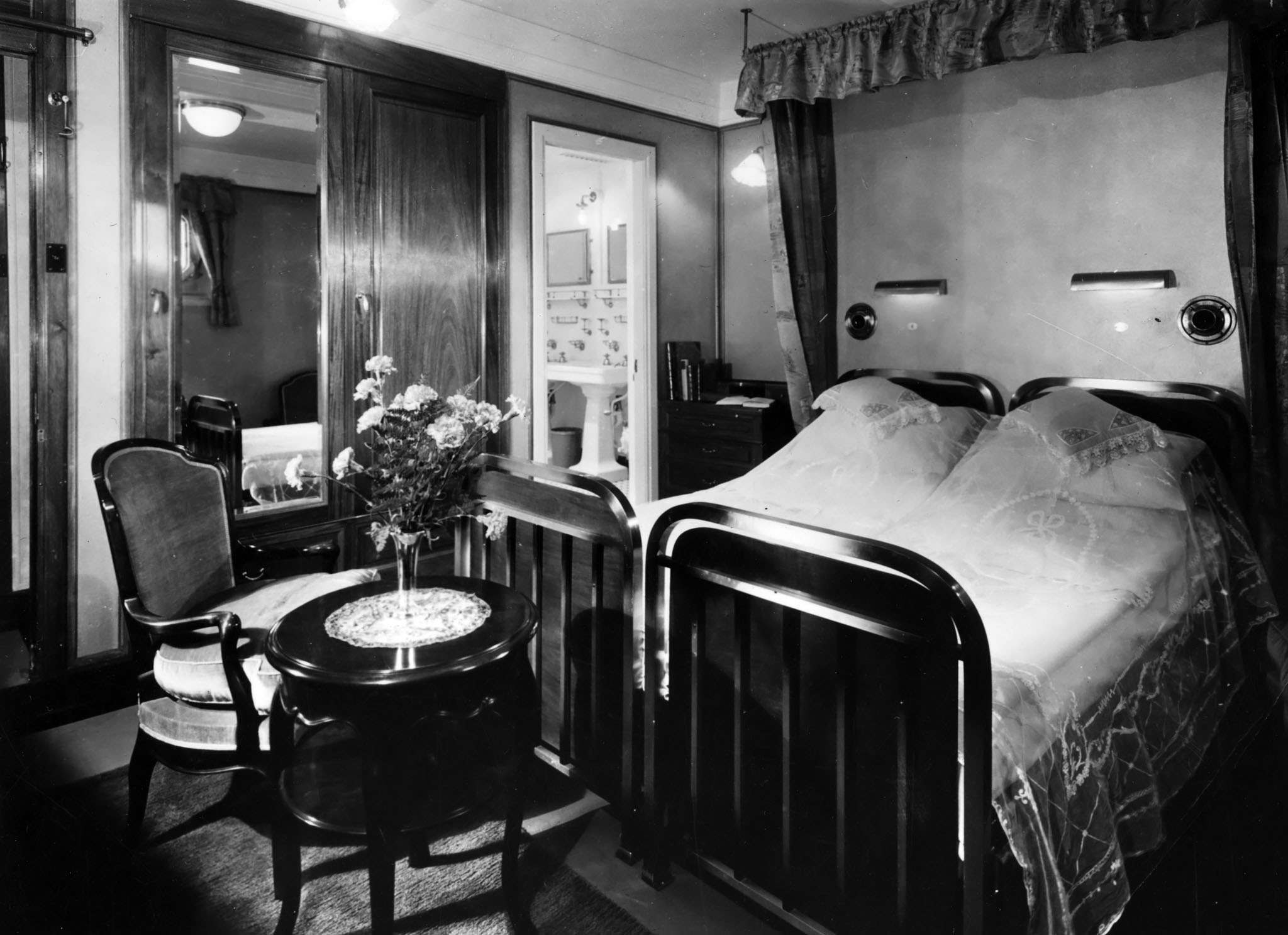
The final photo from first class accommodation is of the elevator doors. Fabulous marquetry and I’ve taken a crop of the bank of elevator buttons too which shows the boat deck at the top, four decks below that, then provides stops at the dining room, the swimming pool gallery, and the swimming pool itself.
Second Class
Second class had the same array of lounges for the use of its passengers as those paying the premium not to have to mingle with any of them.
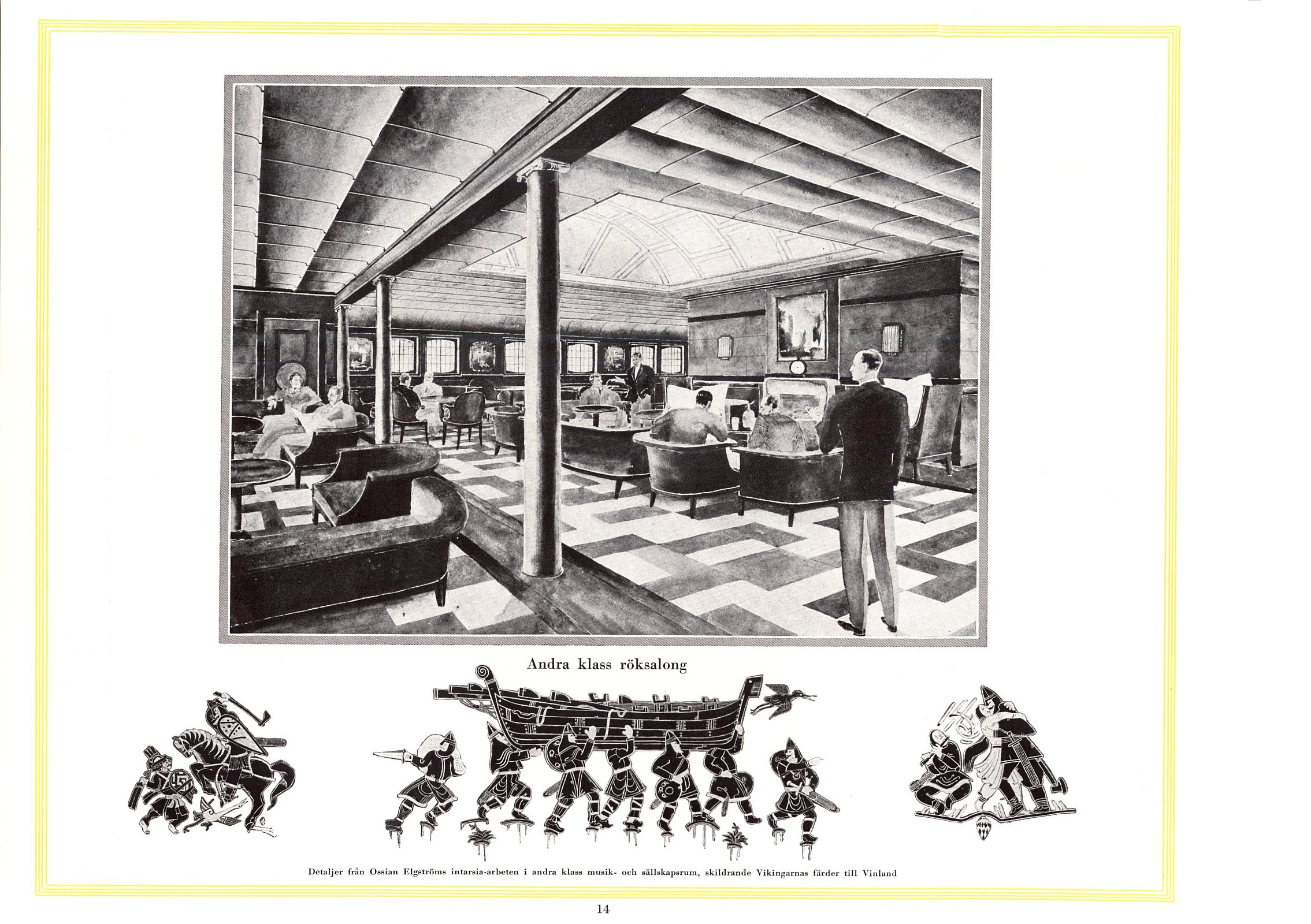
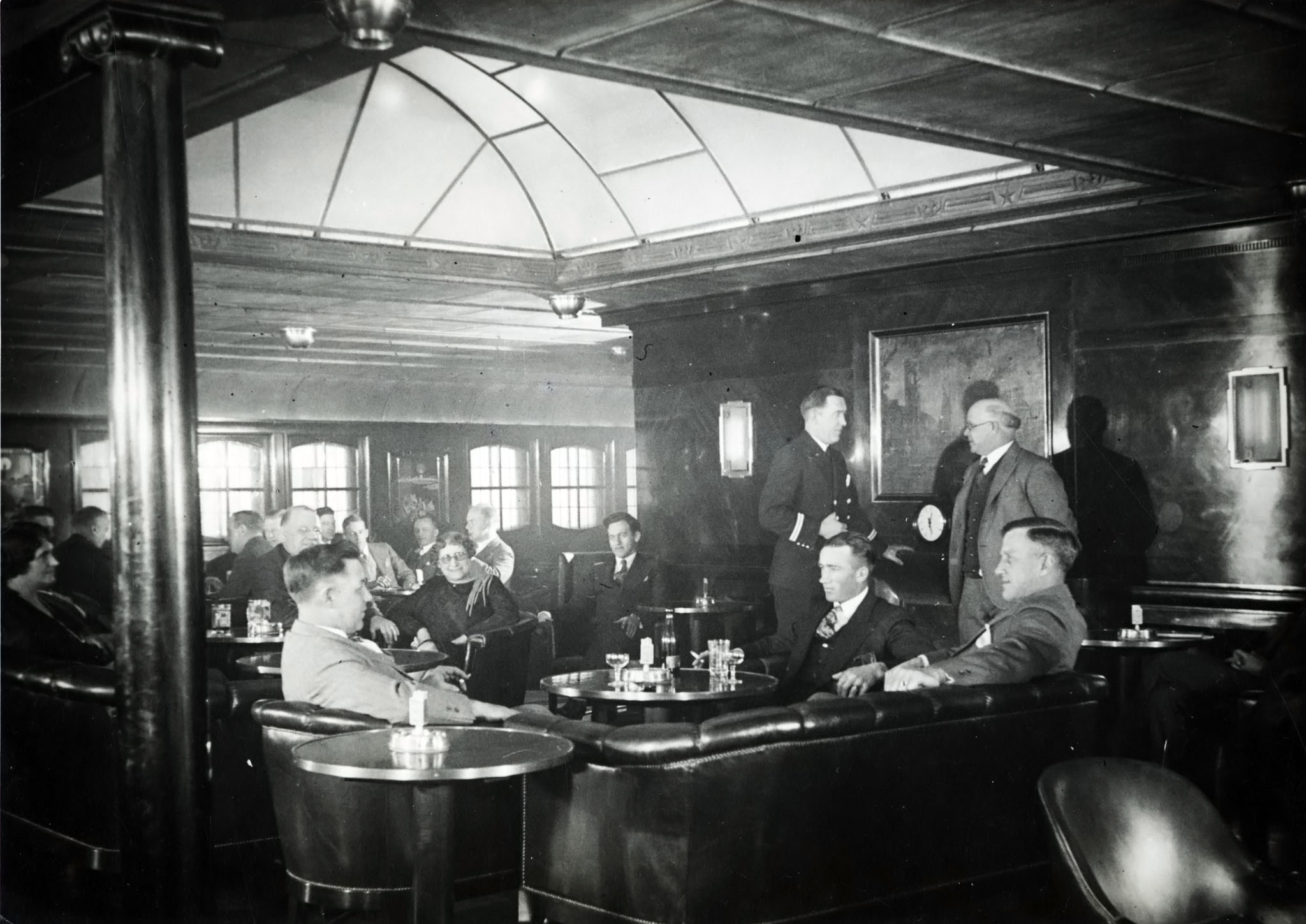
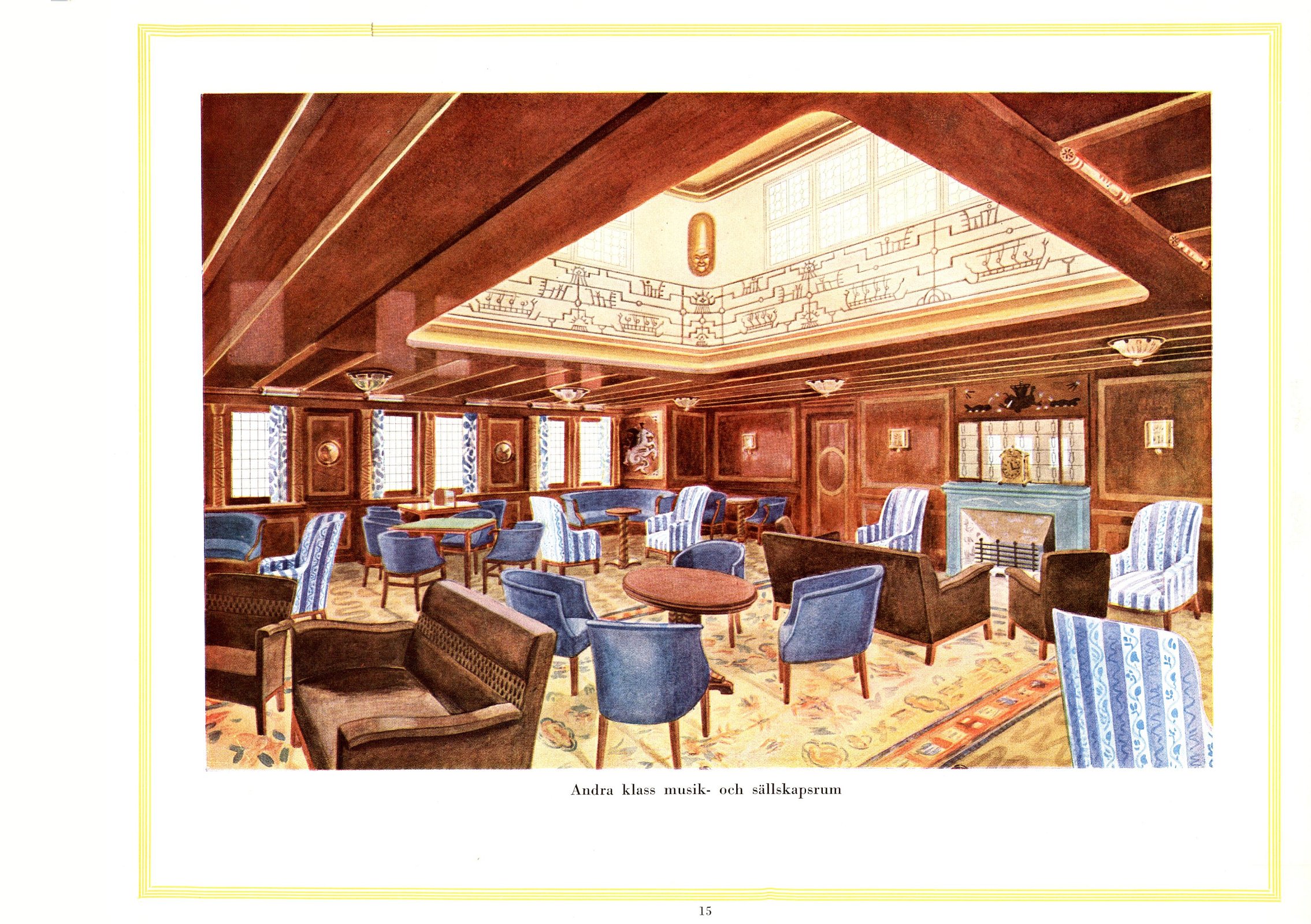
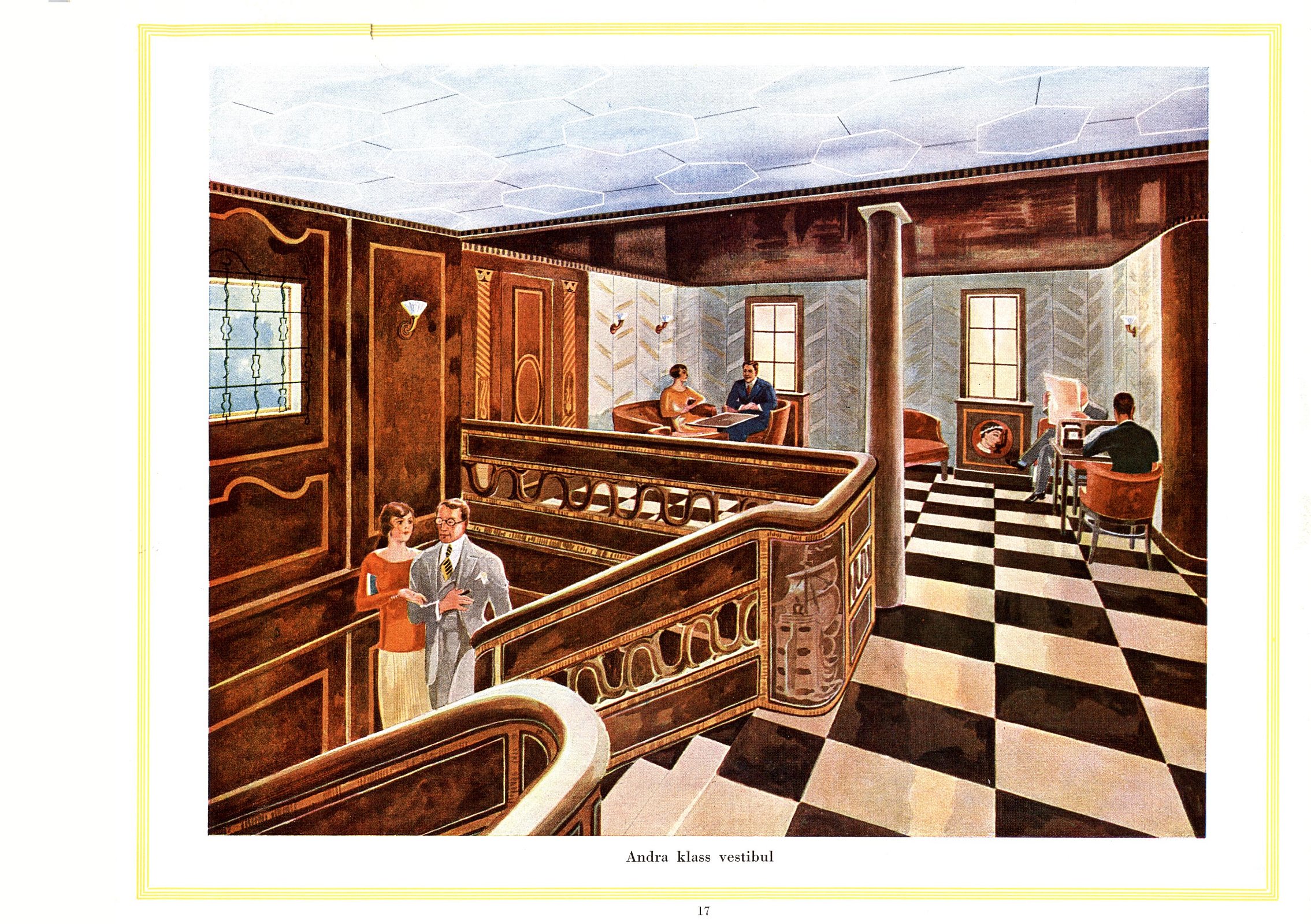
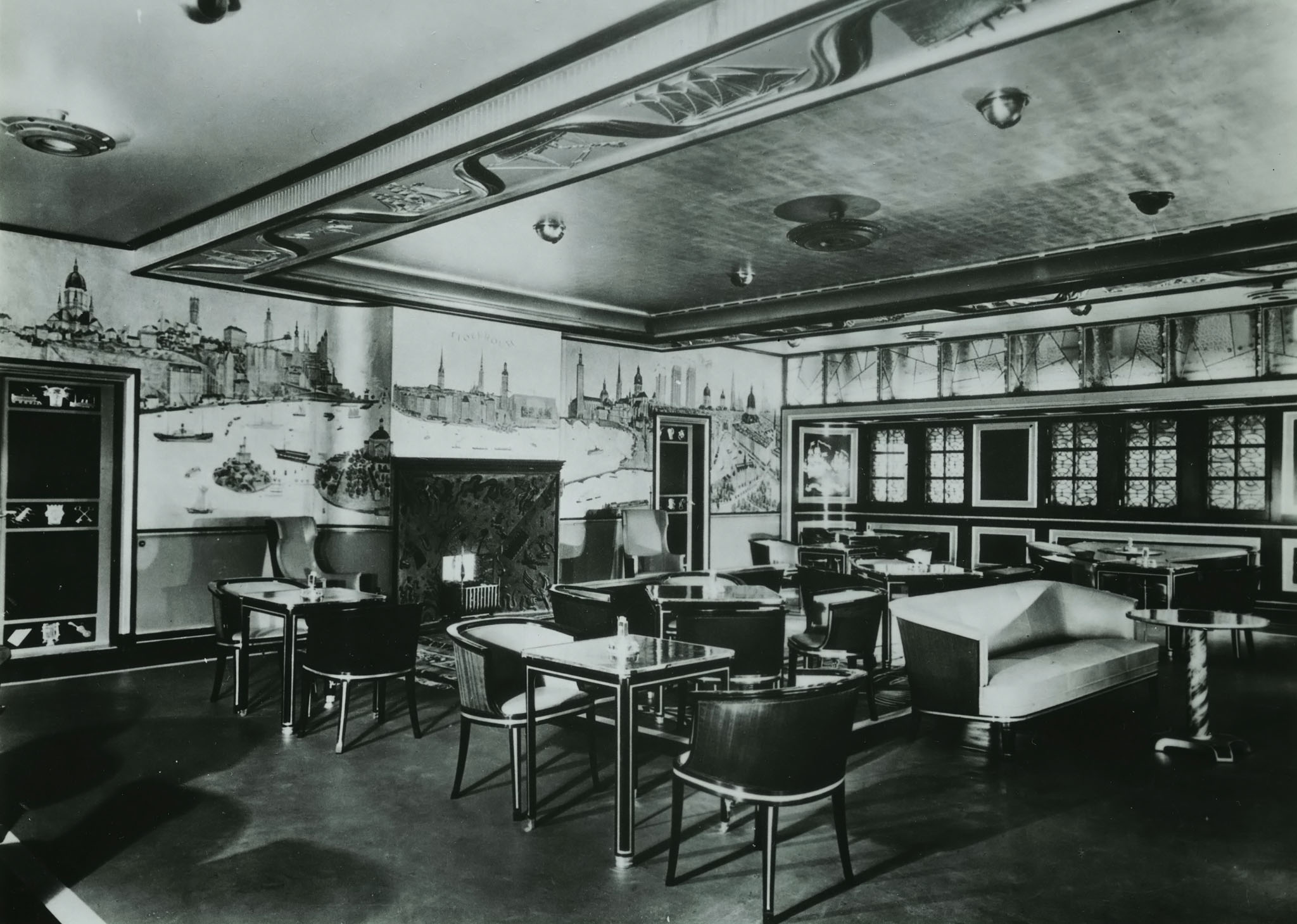
The dining room looks a little more relaxed for second class travellers aboard Kungsholm. Just look at that flirtatious body language on the left side! You wouldn’t get such unseemly behaviour in first class!
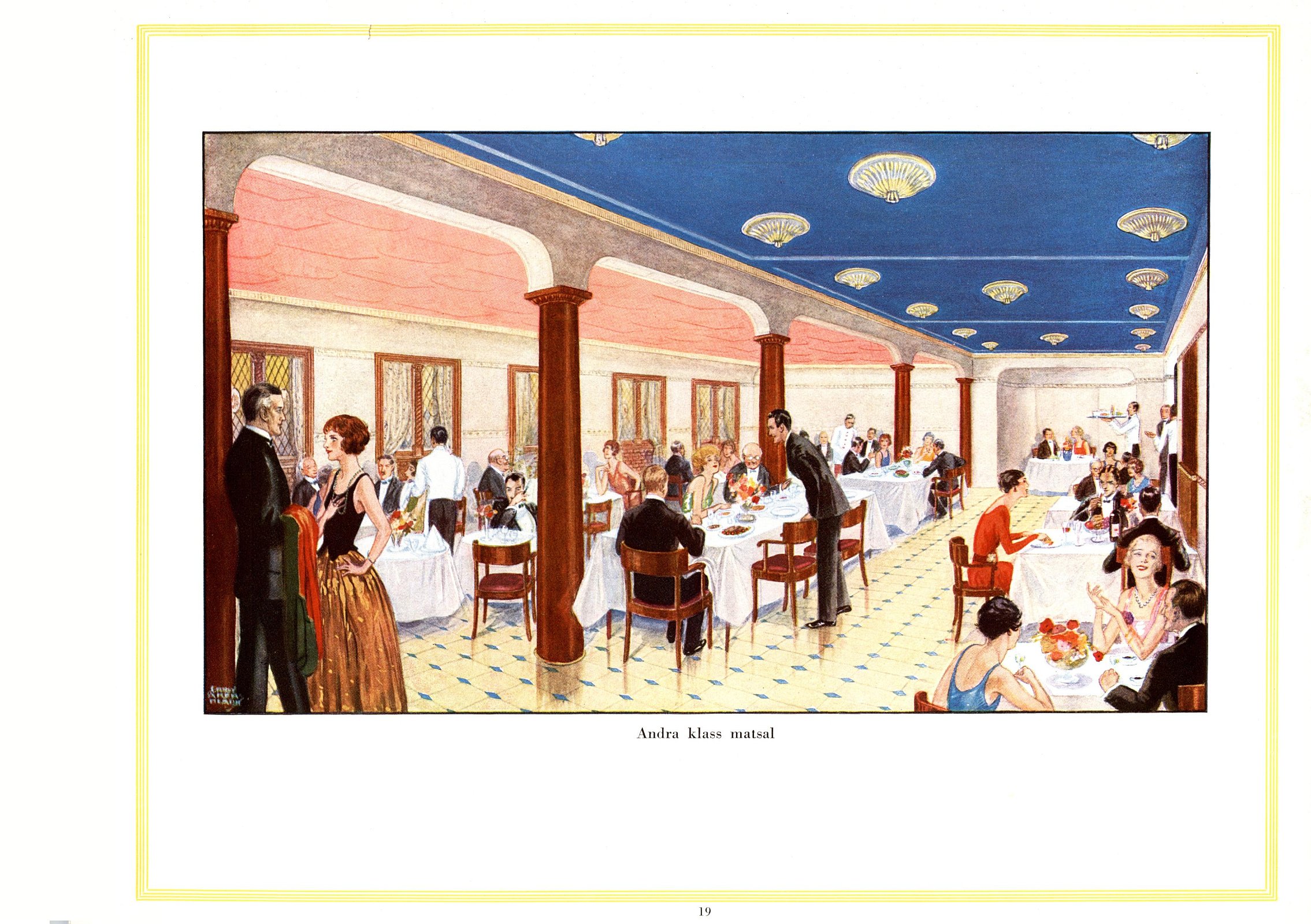
Second class passengers had use of a library too; perhaps not quite so refined with its seating and decor but still with plenty of space. Cabins for second class cruise passengers lacked an ensuite but seemed pretty well-equipped nonetheless. A fan! Luxury!
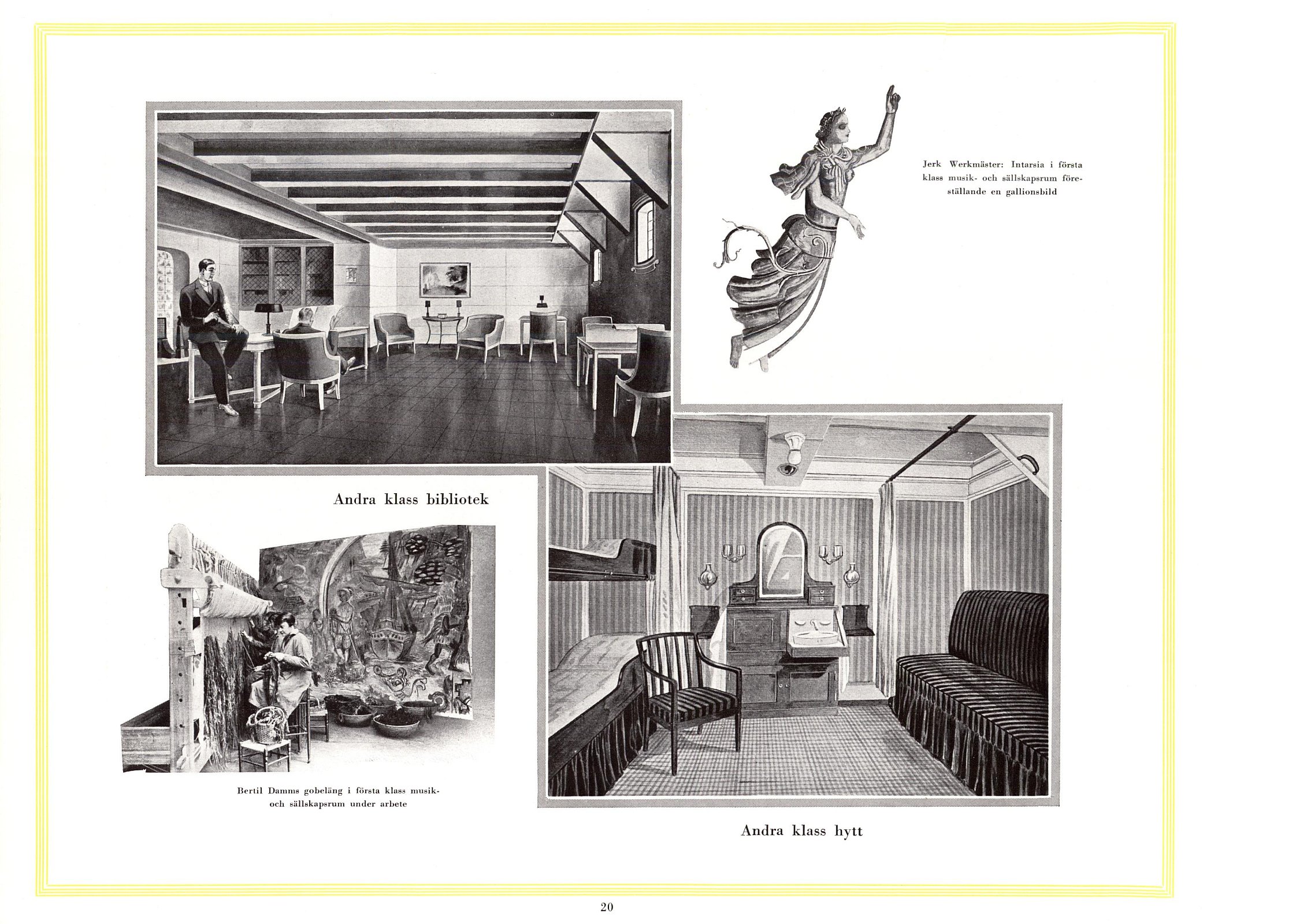
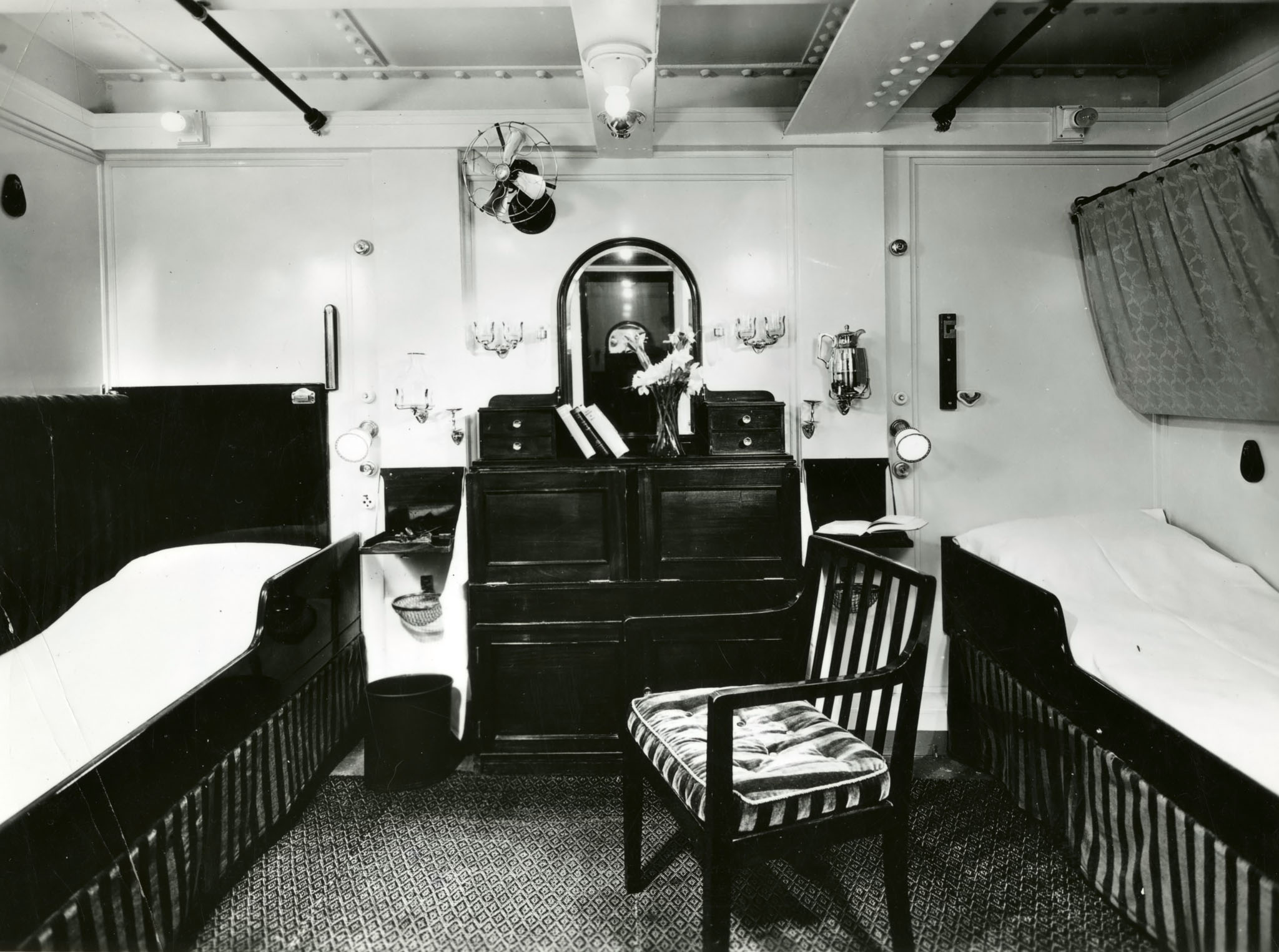
Third Class
The following deck plans showing off some of the areas for third class passengers comes via this Swedish American Line fan website which has more detailed information about the interior design of Kungsholm in general. The cabins have an interesting layout with a considerably higher number of interior arrangements on show. Not having an ensuite and relying on shared bathrooms and toilets (the horror!) permits a squarer room configuration and helps with that considerably, I guess.
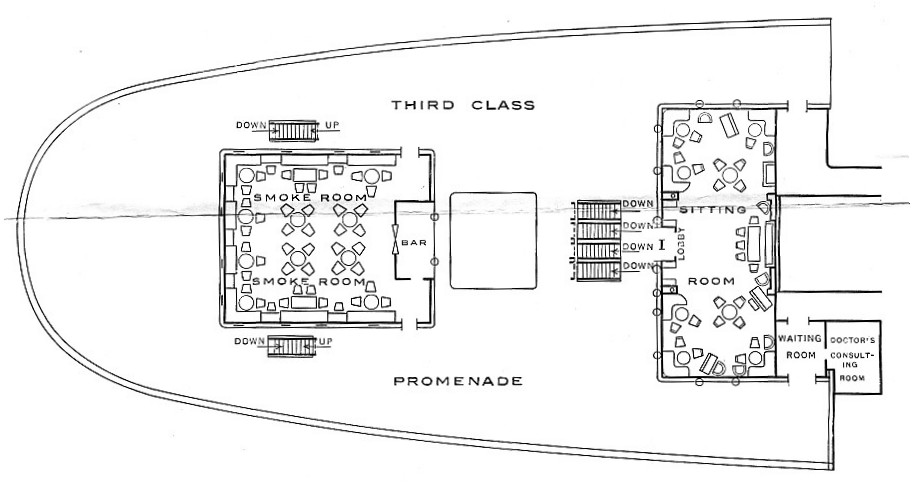
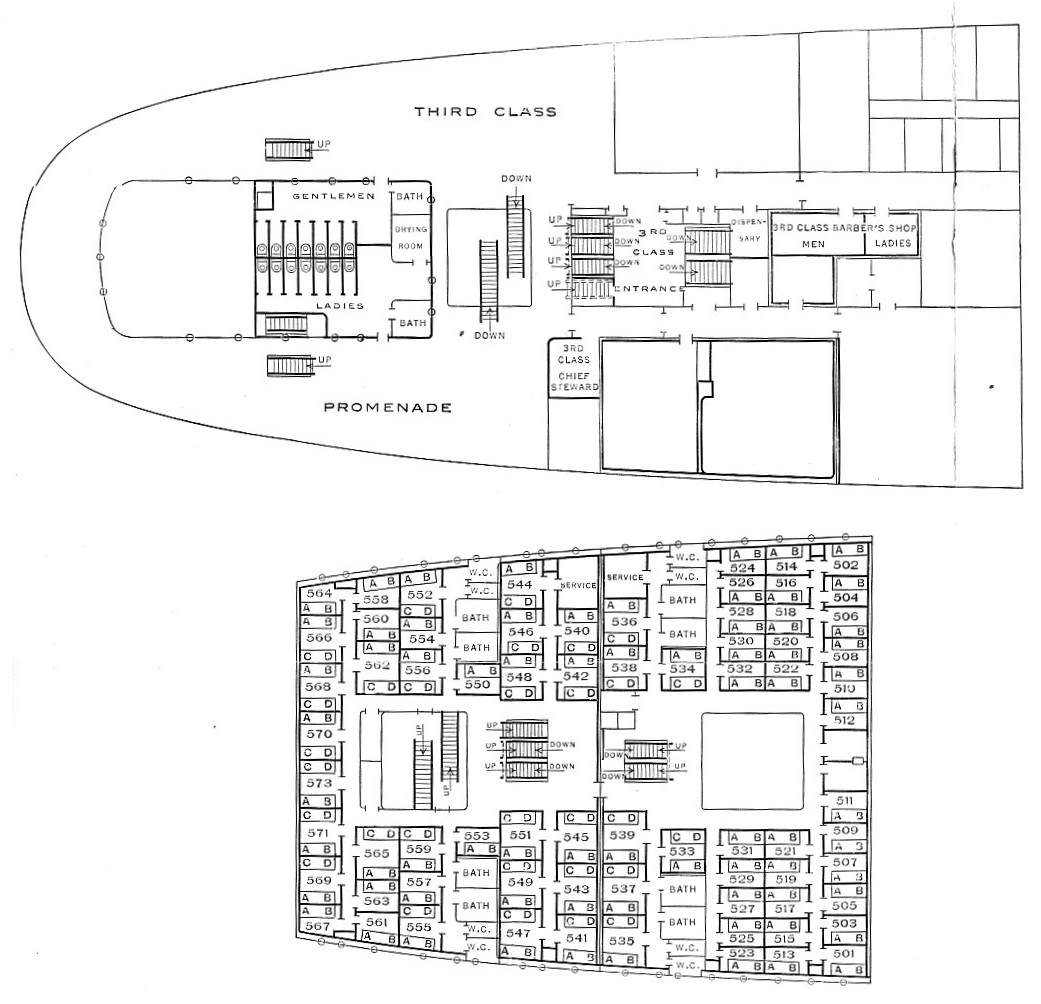

Dining arrangements for third class, though, were still clearly very good. The space on show in the image below is probably far in excess of most dining rooms we see on cruise ships these days. Third class dining of this era tended to be arranged bench-style so Kungsholm was clearly making the move to drag the lower classes up by their lapels.
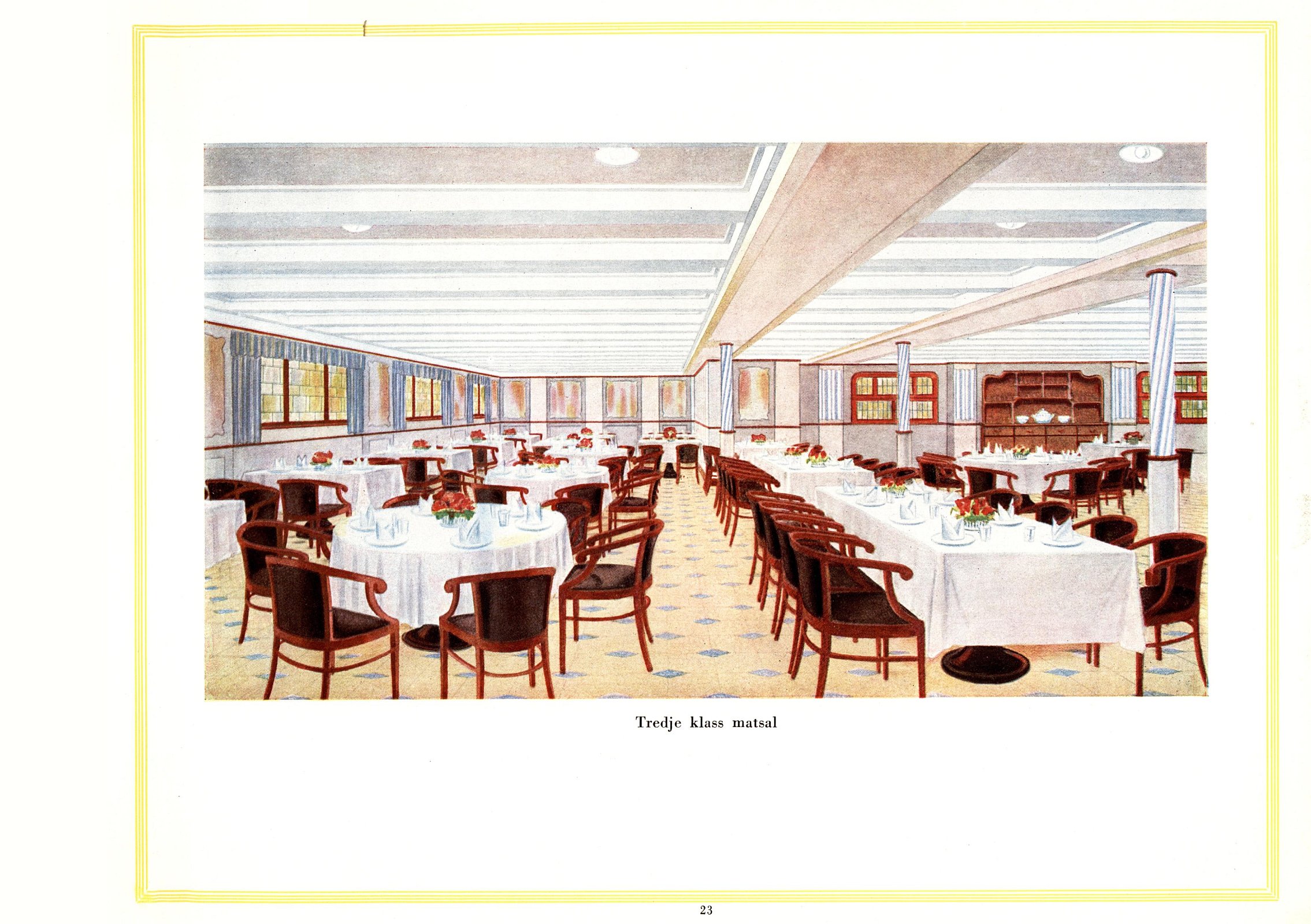
Kungsholm Cruise Onboard Activities
Music lounges provided for some entertainment for the adults on the ship as has already been seen. Children were also catered for with a nursery according to the brochure.
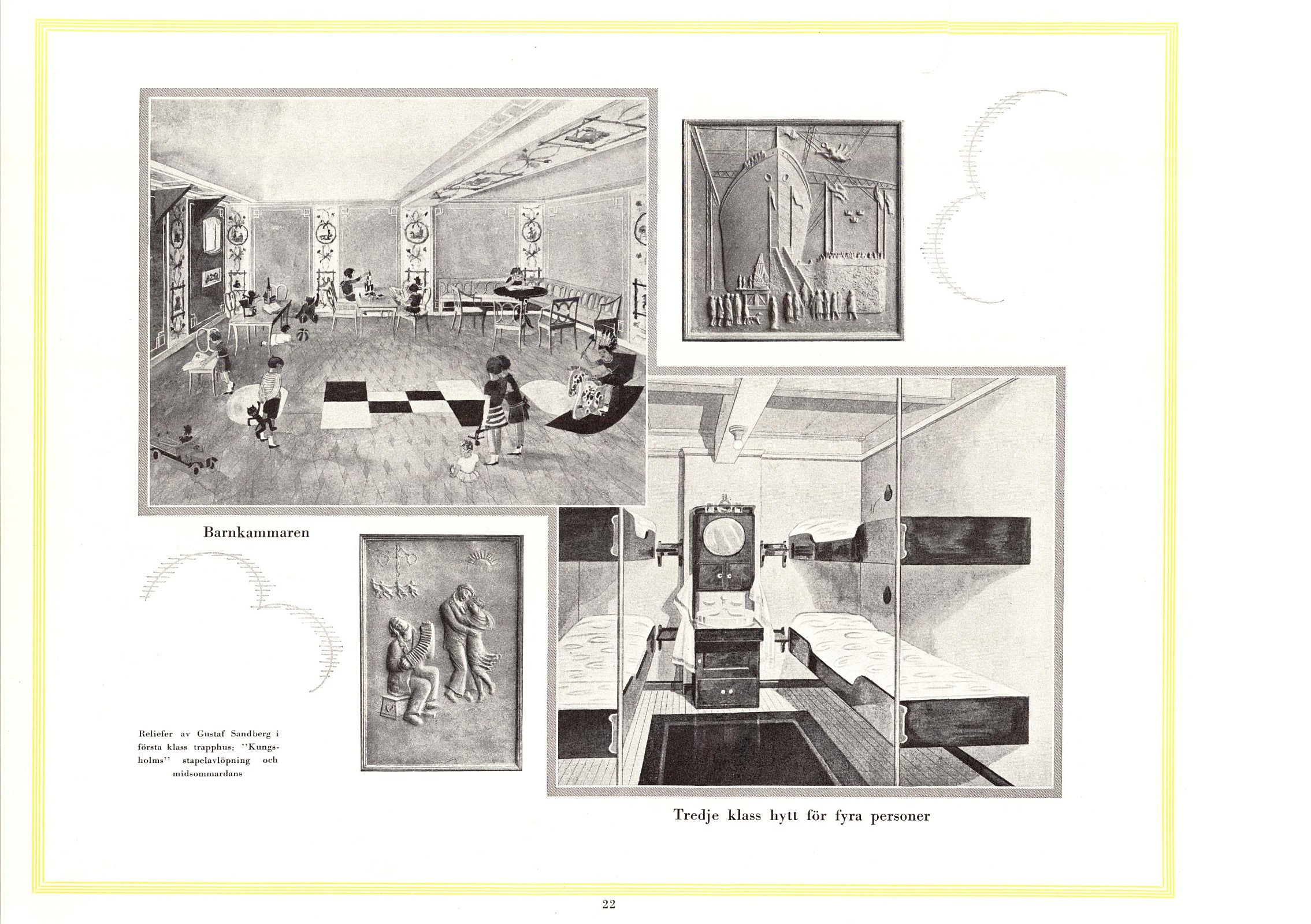
The fabulous cross-sectional diagram does indicate that there was a gym next to the sub-water line indoor pool. I’ve no idea, though, if this was available to all classes of passengers. Certainly, the first class elevator stopped at the pool and its gallery but whether there was access for other people isn’t obvious. The top deck, though, also had a pool which might have been for more general use and you can see that in the video further down.
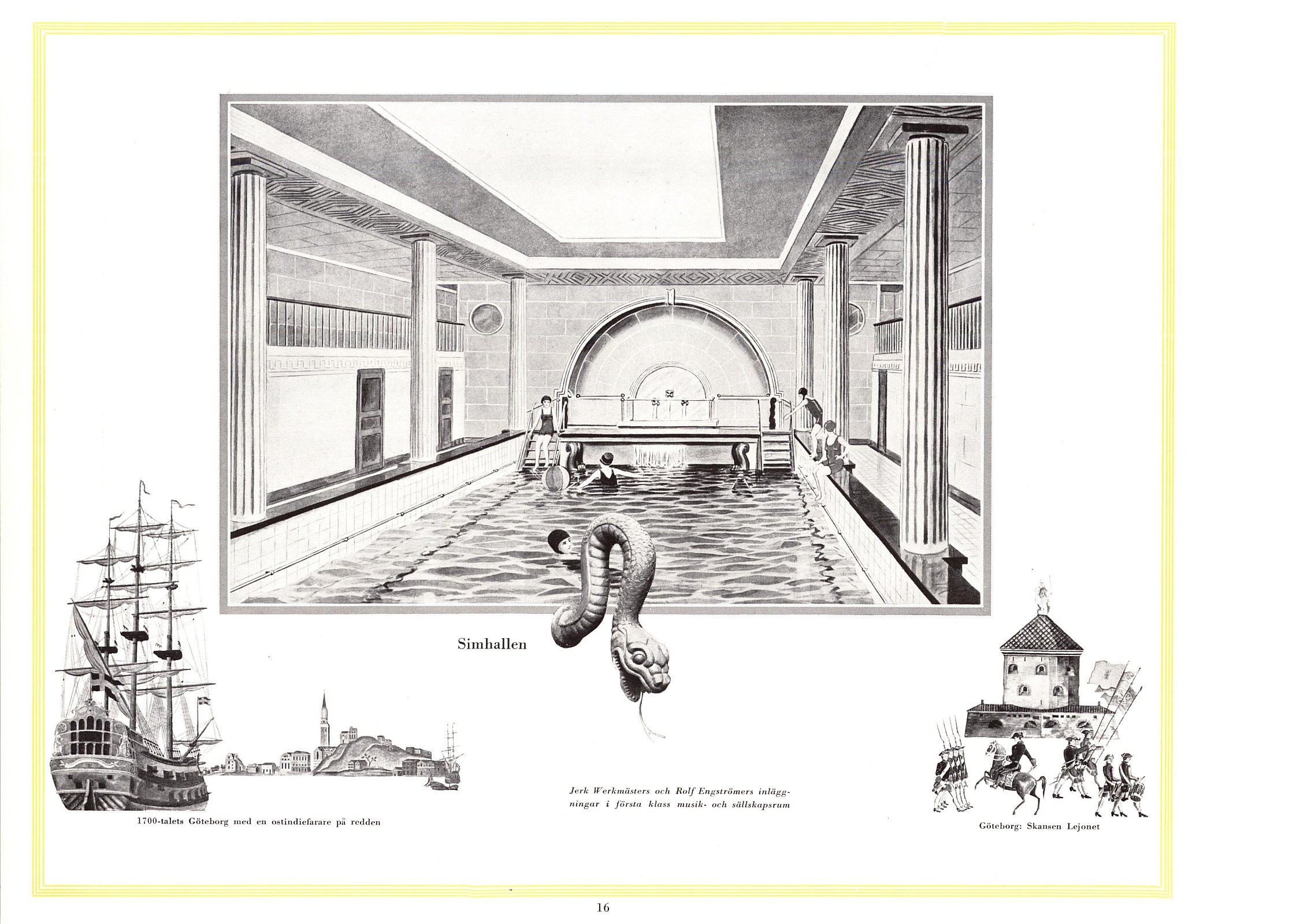
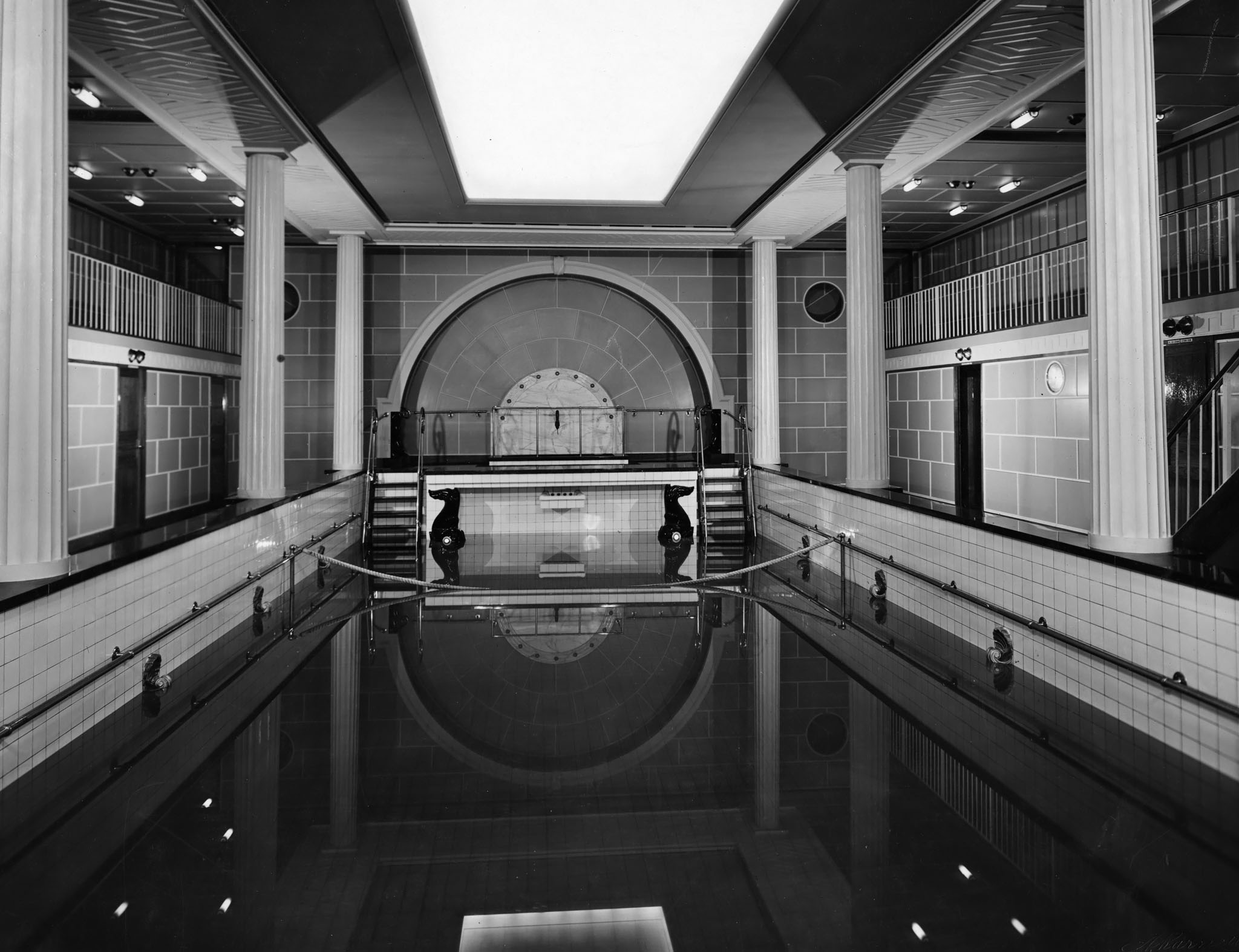
I do like falling down an internet rabbit hole; that’s what the open net was designed to facilitate (*cough* screw you Facebook *cough*) after all. Kungsholm had some lovely features – the art deco designs, the space in public areas, and the height of some of the lounges – but some I’m glad aren’t so prevalent these days too – smoking areas with a stench that permeates the surroundings and the class system aboard ships can die a horrible death together as far as I’m concerned. I imagine it would have been an incredible experience to cruise on her, though.



